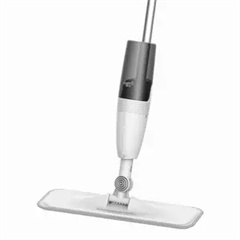When it comes to cleaning, “MOP” usually stands for “Mopping,” but in this context, I understand it as a metaphor for design patterns that can help you achieve cleaner and more maintainable code. Design patterns are proven solutions to common programming problems, and using them appropriately can make your codebase more organized, flexible, and easier to understand. Here are some design patterns (“MOP patterns”) that can help you write cleaner code:
- Singleton Pattern:
- Ensures that a class has only one instance ad provides a global point of access to that instance.
- Useful for scenarios where you want to share a single instance of an object across the entire application.
- Factory Pattern:
- Provides an interface for creating objects but allows subclasses to decide which class to instantiate.
- Useful when you need to create objects without exposing the instantiation logic to the client code.
- Observer Pattern:
- Defines a one-to-many dependency between objects so that when one object changes state, all its dependents are notified and updated automatically.
- Helps achieve loose coupling between objects, promoting better code organization and maintainability.
- Decorator Pattern:
- Allows behavior to be added to individual objects dynamically, without affecting the behavior of other objects from the same class.
- Useful for adding additional features or responsibilities to objects, following the Open-Closed Principle.
- Strategy Pattern:
- Defines a family of algorithms and makes them interchangeable without modifying the client code.
- Useful when you need to choose from different algorithms or behaviors at runtime.
- Facade Pattern:
- Provides a simplified interface to a complex system, acting as a higher-level entry point for client code.
- Useful for hiding the complexities of subsystems and improving code readability.
- Adapter Pattern:
- Allows incompatible interfaces to work together by providing a wrapper that translates one interface into another.
- Useful when integrating existing code with different interfaces or third-party libraries.
- Template Method Pattern:
- Defines the structure of an algorithm but allows subclasses to override specific steps of the algorithm without changing its structure.
- Promotes code reuse while allowing customization of certain parts of the algorithm.
- Command Pattern:
- Encapsulates a request as an object, allowing the parameterization of clients with different requests.
- Useful for implementing undo/redo functionality, queuing operations, or implementing callbacks.
- Chain of Responsibility Pattern:
- Allows multiple objects to handle a request without specifying the receiver explicitly.
- Useful when you want to decouple the sender and receiver of a request.
Implementing these design patterns in your codebase will help you maintain a cleaner and more organized code structure, improve code reusability, and enhance maintainability. However, it’s essential to use design patterns judiciously and not overcomplicate your code with unnecessary abstractions. Choose the right pattern for the specific problem you are trying to solve.








